I’ve been getting a lot of requests for a Bombardier DHC-8 Q400 illustration over the past six months, so I know there are a lot of you out there who have been patiently waiting for this one. And I do mean patient – heck, I proudly announced the start of this illustration on my Facebook page nearly two months ago, and it was only tonight that I finally wrapped this thing up.
I’ve had a lot of other projects to work on since then (and I took some vacation time as well), so there just wasn’t much time to focus on this little guy. But it’s complete, and I appreciate the patience of everyone out there who needed this one!
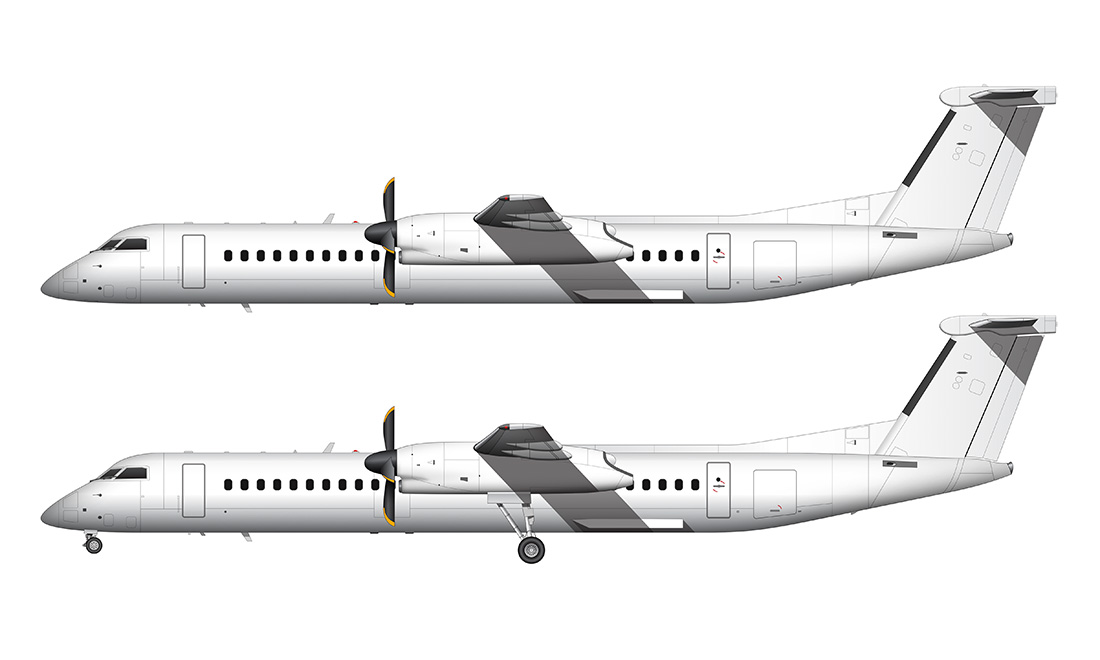
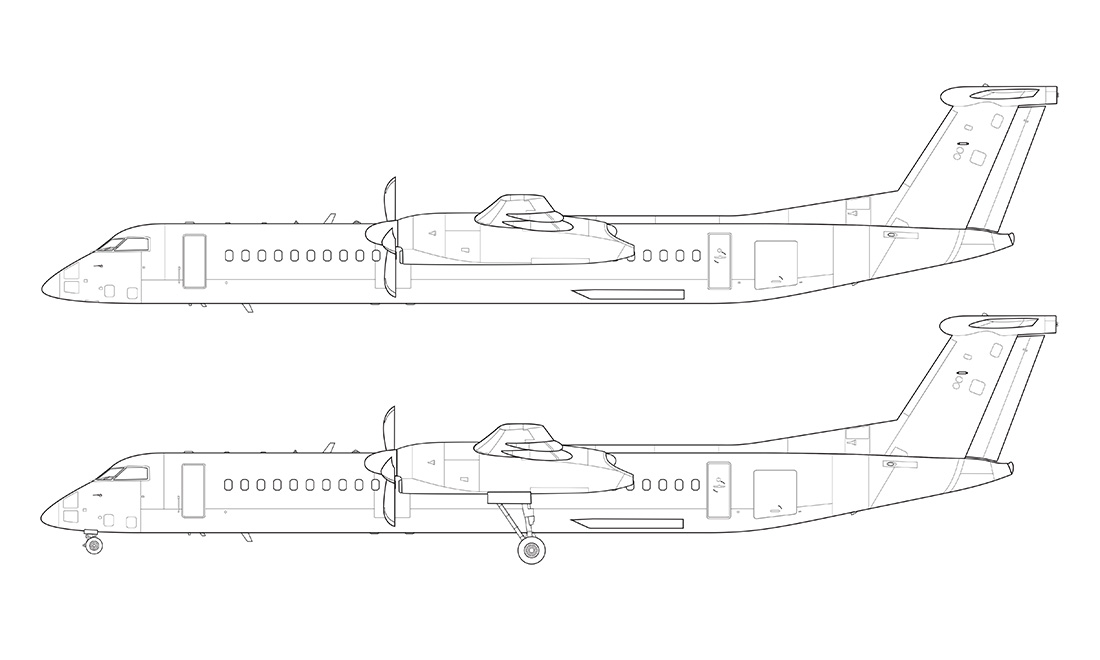

The Q400 is actually one of my favorite airplanes – at least from an aesthetic point of view. It’s a very lean looking aircraft that looks downright stealthy and sleek from certain angles, and the high wing gives it a fairly unique look compared to most the other twin-engine airplanes roaming the airports these days. It’s also pretty neat from the inside, provided that you have a window seat.
That high wing means that there isn’t anything to block your view of the scenery below, and watching the main gear smack the runway in a plume of smoke when landing is always a treat. It’s also an awesome reminder of how strong they build aircraft these days. These things take a beating, that’s for sure.
From a technical illustration point of view, this ended up being one of the easiest templates I’ve ever created. There is a ton of really great Q400 reference material out on the internet, and I didn’t have any difficulty finding detailed photos or illustrations of all the little details. The only downside to that is knowing when to say when – having too much detail in these illustrations never works out (because things get messy at smaller scales), so deciding what detail to put in and what to leave out was the biggest issue.
Another thing that made this illustration easier than the others was the fact that it’s a prop (as opposed to a jet). That means a simpler engine and wing, which is always the most time-consuming thing to replicate in these drawings. It’s nice to have an easy one every now and then!

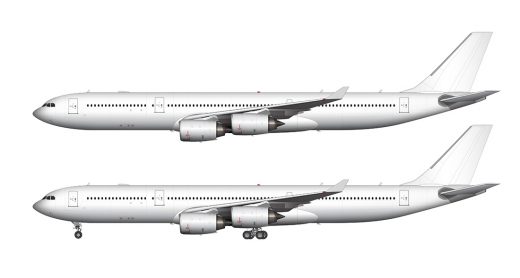
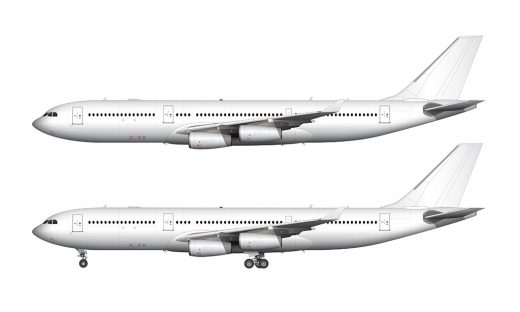
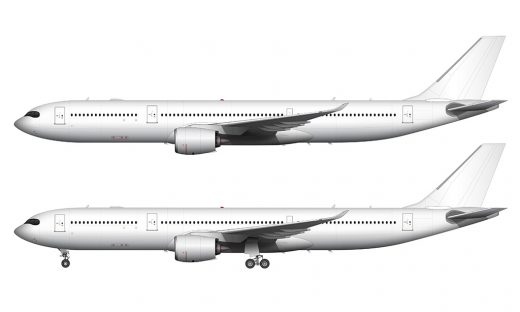
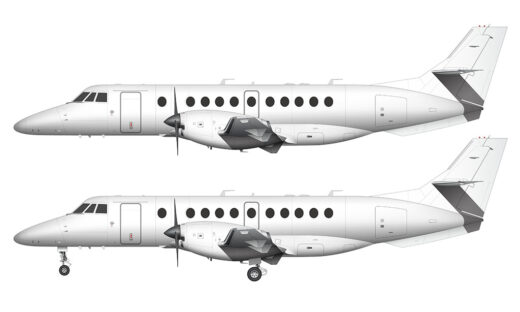
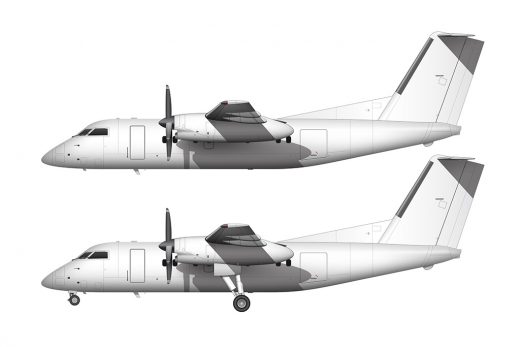

Loving the templates so far. I only discovered these a few days ago and they look amazing. May I ask what your next project is, if there is one?
Thanks! I appreciate the compliment. I’m currently working on an ERJ-175, and I hope to have it done sometime within the next week or two. BTW, I sometimes post project updates on my Facebook page, so be sure to check that out if you haven’t already.
Hi Norebbo!
I’ve been an aircraft lover for the last …. 40+ yrs and after getting an ASE degree didn’t do anything related to aircraft (was in the spacecraft business). I’m embarrassed to say only the main 10-20 commercial, passenger jets are recognizable to me and decided to do something about that this week. It is called “plan spotting” and there are groups doing this around the world – it is an entire subculture. Anyway, having detailed line drawings for each aircraft so those slight differences can be easily discovered is a requirement.
Found your site looking for Bombardier Q400 information and wish I’d found it sooner! Because I’m an engineer, I’ll have to validate your drawings against those on-file with the FAA (Airbus and Boeing mainly have airport planning guides there). Getting **every detail** correct seems next to impossible.
Thinking about creating a comprehensive plane-spotting pamphlet or field guide for the world (different aircraft tend to be seen in different regions). Spotting in Singapore is different from Moscow or Buenos Aires or DFW or at smaller, regional fields across the globe. I’m lucky to live near ATL, which many opportunities to see the big planes and a few smaller fields nearby for spotting the smaller, private aircraft.
Any plans to create one for a DC-3 or Tupolev or Chinese manufacturers?
Anyway, thank you, thank you, thank you! The wireframes will be a great help to me!
Regards,
JD
Hey JD – glad you find my illustrations useful! You’ll probably find that my illustrations aren’t totally perfect in terms of getting all the little details correct, as I could probably spend years on each illustration if I was striving for complete perfection. 🙂 I do strive to make them as accurate as possible given the resources available to me, so hopefully you won’t have any issues using my images as accurate reference.
Yes, old propliners and Russian/Chinese aircraft are definitely in the plans – after I complete the major US and European stuff. And I do consider this to be a lifelong project, so I’ll be working on these for as long as I can. Considering how many types of aircraft there are in this world, there’s a pretty good chance that I’ll never finish. 🙂 I’ll do what I can though…
Good luck with your project! Let me know how it turns out…
Yes, it is different in Singapore, but there is the c919 here.
Thanks mate, these are great!
You’re welcome! I’m glad these are useful to you.
Just asking a question, could you add more types of planes because until now I love them!
Thanks – yes, more types of planes are coming!
can you please do a bombardier q200/300.love it by the way.
Where is the Bombardier Q100/200
They are on my list. 🙂
Could you do the Dash 7 please. Cool aircraft and I can not find another side view anywhere. BTW love your work!)
Thanks James! I’ll add the Dash 7 to my list.
You should try doing the Boom Overture! I have heard that the tail is a little tricky to master, but you get every detail right in your illustrations!
Yeah, I’ve already been gathering reference material for it. I can’t wait to do the illustration!
Could you draw the Comac ARJ21-700? Smaller aircraft and I could not find a perfect side view of it.
More Comac stuff will come eventually (after I get through a backlog of previously committed to illustrations).